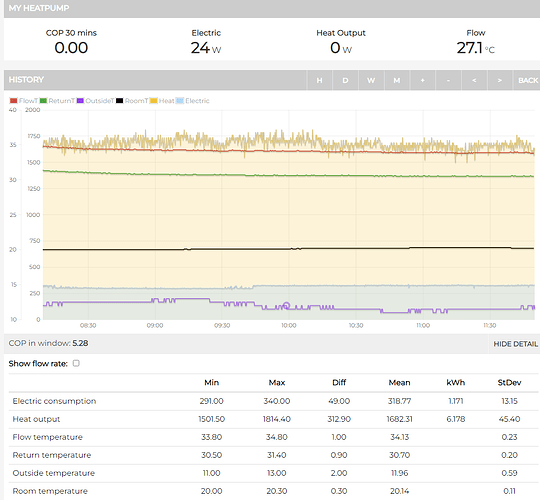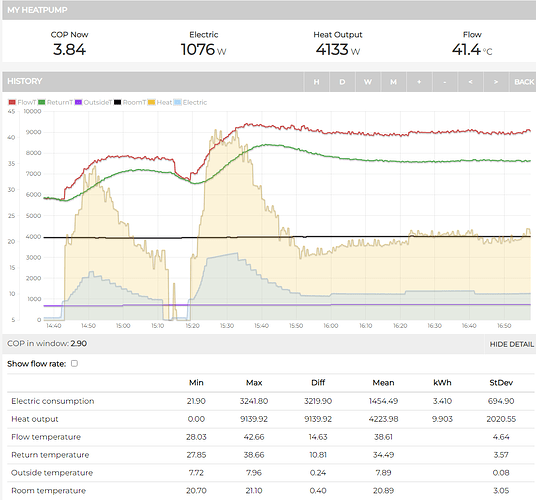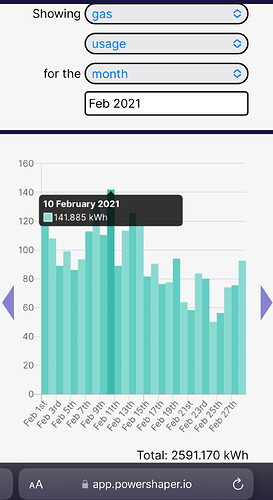Hi Colin,
There was a post earlier in this thread or in another linking to an article about heat loss. It is a straight line that was found to be offset slightly be other internal heat losses.
You are smarter than me but I am sure that even though the heating may only start at 16c or so it is still just the difference between the inside and outside temperature and the `house’ values that determine the heat loss.
The equation is just
Heat loss = house value x temperature difference.
I call it house value as it is something to do with u values and such that I don’t have time to look at right now.
If I know the heat loss at one temperature difference I can easily determine the house value and plug it into any temperature value.
My `house value’ is something like 0.15, that is the losses out of the walls and the windows etc.
I did compile of spreadsheet of data of heat produced and temperatures that confirms this.
However, I don’t really need to know any of this as I have had two winters here with gas and he most I ever used was 110kWh on a day last December.
I always heated the house the same with gas and so it will have averaged 20c in here for a day when if I remember it was about -5c all day and night.
It was the most gas we have ever used and as the house remained at the same temperature for the whole 24 hours it can only have lost around 4kW an hour at most.
My current radiators are quite capable of heating this house to 22c at a flow temperature of 30c when it is 7c outside. I did it on one day.
The problem is the high minimum output of the heat pump, it’s too much for this house.
I was just looking at the 4 to 8kW range, they are far more suited to a house of this size.
Basically they are 8kW heat pumps that are derated.
My (kW has the same minimum output as mine but your house is twice the size of mine.
How can this heat pump be suitable for both of our houses? It doesn’t make sense to me.




